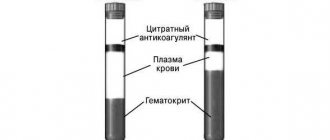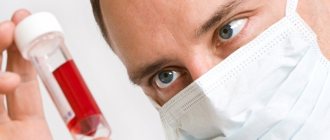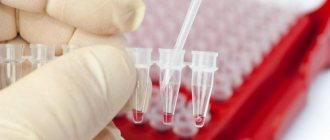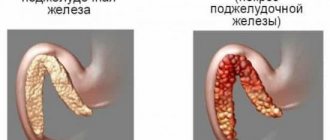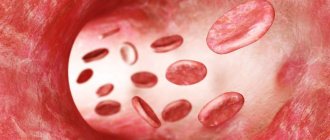What causes a decrease in creatinine levels, and what can be done to keep their levels within normal range?
When the body uses the amino acid creatine for energy, creatinine remains as waste. Creatinine levels in the blood or urine can be checked if there is concern about liver or muscle disease.
Most often, low creatinine levels are a sign of age-related muscle loss, or it is a temporary condition during pregnancy, illness, or malnutrition. Low creatinine levels in older people or people with low body weight should not be a serious cause for concern.
When is the analysis performed?
The referral is issued by a general practitioner, nephrologist, infectious disease specialist, gynecologist or endocrinologist. Indications for analysis:
- signs of disease of the urinary system: change in the color of urine, difficulty urinating, pain or cramping, persistently high blood pressure, pain in the lumbar region, swelling, insomnia, weakness and poor appetite;
- the need for hemodialysis and evaluation of its effectiveness;
- control over the effectiveness of treatment methods for kidney pathologies;
- identification of complications when taking nephrotoxic drugs;
- advanced diagnostics of skeletal muscle diseases;
- severe dehydration of the body;
- preparatory procedures before computed tomography.
Venous blood is collected for the study.
What is creatinine?
Creatine
is an amino acid produced naturally in the body and obtained in small quantities from food. Creatine has gained popularity as a dietary supplement following evidence that it can increase body weight, improve physical endurance and speed recovery. When creatine is broken down, it is used for energy and creatinine remains as waste products. Creatinine levels vary depending on factors such as height, age, or gender, so there is no standard value.
How to determine
To determine the level of creatinine in a person’s blood, the doctor prescribes special tests.
There are several types of analyzes for this:
| Analysis | Description |
| Biochemical blood test | The most effective diagnostic method. Before collecting material from a vein, you must refuse to eat. |
| Rehberg's test | It is prescribed to determine the level of blood filtration by the body and determine the correct functioning of the kidneys. It is carried out by repeatedly drawing blood and urine throughout the day. |
| Nitrogen to Creatinine Ratios | This analysis makes it possible to identify the cause of deviations in the level |
What does a low creatinine level mean?
Low creatinine levels may indicate a problem with the muscles or liver, but can be caused by something less serious, such as loss of muscle mass in older people, or pregnancy.
Creatinine is always present in the bloodstream, from where it is removed by the kidneys and excreted from the body in urine. Research shows that creatinine helps fight disease and stops the growth of bacteria. A laboratory test used by doctors shows how well the kidneys remove creatinine from the body.
There are four main causes of low creatinine:
- low muscle mass;
- liver diseases;
- diet;
- pregnancy.
Low muscle mass
Creatinine levels are often related to muscle mass, which can decrease with age or illness. A low level may indicate that muscle mass is reduced, such as in muscular dystrophy. Older people often lose muscle mass as they age, and this is not usually a serious medical problem.
Liver problems
Creatine is produced by the liver, and an unhealthy liver will not be able to produce normal amounts of creatine. Chronic liver disease can cause a 50% reduction in creatine production. This means there will be a low level of creatinine in the blood, which can be checked by a blood test.
Diet
Although creatine is produced naturally, small amounts come from food, so diet may influence low creatinine levels. Creatine is primarily found in meat, so people who follow a vegetarian or low-protein diet tend to have low creatinine levels.
Pregnancy
Pregnancy often causes low creatinine levels, which will return to normal after childbirth.
Creatinine is a product of the non-enzymatic breakdown of creatine and creatine phosphate, which is formed in muscles. It is excreted from the body by the kidneys.
Synonyms Russian
1-methylglycocyamidine, a product of the conversion of creatine phosphate, creatinine in the blood.
English synonyms
Creatinine, Creat, Serum Creat, Cre, Blood creatinine, Serum creatinine, Urine creatinine.
Research method
Kinetic method (Jaffe method).
Units
μmol/L (micromoles per liter).
What biomaterial can be used for research?
Venous, capillary blood.
How to properly prepare for research?
- Do not eat for 12 hours before the test.
- Avoid physical and emotional stress 30 minutes before the test.
- Do not smoke for 30 minutes before the test.
General information about the study
Creatinine is a residual product produced in muscles when a substance called creatine is broken down. Creatine is part of a cycle that provides the body with energy to contract muscles. After 7 seconds of intense physical activity, creatine phosphate is converted to creatine, which then turns into creatinine, which is filtered in the kidneys and excreted in the urine. Creatine and creatinine are stably produced by our body in constant quantities. Almost all creatinine is excreted by the kidneys, so its concentration in the blood is a good indicator of kidney function. The amount of creatinine produced depends on total body weight and, in particular, muscle mass. Therefore, for example, creatinine levels in men will be significantly higher than in women and children.
A small part of it (15%) is secreted by the tubules, but it is mainly produced due to filtration in the glomeruli. The level of creatinine in the blood does not go beyond the normal range until glomerular filtration rate decreases to critical values, especially in patients with low muscle mass. The creatinine level then rises.
It is precisely because of the large number of components (muscle mass, gender, age) that affect the concentration of creatinine in the blood that this study is not the best screening test for detecting renal failure. At the same time, creatinine is a more sensitive indicator of kidney disease than urea.
What is the research used for?
- To assess renal function.
- To assess the function of major organs and systems (in combination with other studies).
- To evaluate kidney dysfunction and the effectiveness of its treatment if creatinine or urea are outside the normal range and the patient has an underlying chronic disease, such as diabetes, that affects the kidneys.
- If the level of creatinine in the blood and urine is known, the creatinine clearance (Rehberg test) can be calculated - this test shows how effectively the kidneys filter small molecules such as creatinine from the blood.
- To calculate the glomerular filtration rate to confirm kidney damage.
When is the study scheduled?
- At certain intervals in case of already known kidney disease or a disease that can cause deterioration of kidney function (together with a test for urea and microalbuminuria).
- When diagnosing skeletal muscle diseases.
- Before and after the hemodialysis procedure.
- For symptoms of kidney dysfunction: weakness, fatigue, decreased attention, poor appetite, sleep problems,
- swelling of the face, wrists, ankles, ascites,
- foamy, red or coffee-colored urine
- decreased diuresis,
- problems with urination: burning, intermittency, change in frequency (predominance of nocturnal diuresis),
- pain in the lumbar region (especially on the sides of the spine), under the ribs,
- high pressure.
What do the results mean?
Reference values (creatinine norm):
Creatinine
| Age, gender | Reference values | |
| 21 - 75 µmol/l | ||
| 1 - 12 months | 15 – 37 µmol/l | |
| 1 – 3 years | 21 - 36 µmol/l | |
| 35 years | 27 - 42 µmol/l | |
| 5 – 7 years | 28 - 52 µmol/l | |
| 7 - 9 years | 35 - 53 µmol/l | |
| 9 – 11 years | 34 - 65 µmol/l | |
| 11 – 13 years | 46 - 70 µmol/l | |
| 13 – 15 years | 50 – 77 µmol/l | |
| > 15 years | male | 62 - 106 µmol/l |
| > 15 years | female | 44 - 80 µmol/l |
GFR (glomerular filtration rate): 60 and above.
Causes of increased creatinine levels
- Acute and chronic renal failure (amyloidosis, kidney damage due to diabetes, etc.).
- Failure of the cardiovascular system (myocardial infarction, cardiogenic shock, myocardial dystrophy, etc.).
- Massive destruction of muscle tissue (crash syndrome) and release of creatinine from cells.
- Burns (massive necrosis of cells with the release of their contents into the intercellular substance).
- Acromegaly.
- Gigantism.
- Hyperthyroidism.
- Dehydration (blood thickening and relative hypercreatininemia).
- Excessive physical activity.
- Excessive consumption of meat products.
- Radiation sickness.
- Obstruction of the urinary tract.
- Taking nephrotoxic drugs (mercury compounds, sulfonamides, thiazides, aminoglycoside antibiotics, cephalosporins and tetracycline, barbiturates, salicylates, androgens, cimetidine, trimethoprim-sulfamethoxazole).
- Damage to the blood vessels of the glomerular apparatus of the kidneys (glomerulonephritis), which may be a consequence of an infectious or autoimmune disease.
- Bacterial kidney infection (pyelonephritis).
- Necrosis of the tubular epithelium (acute tubular necrosis), caused, for example, by drugs or toxins.
- Prostate disease, nephrolithiasis or other factors causing obstruction of the urinary system.
- Reduced blood flow to the kidneys due to shock, dehydration, acute heart failure, atherosclerosis, or complications of diabetes.
Reasons for decreased creatinine levels
- Starvation.
- Overhydration (blood dilution – relative hypocreatininemia).
- Amyotrophy.
What can influence the result?
- Factors distorting the result Pregnancy (especially the first and second trimesters).
- Excess muscle mass, such as in some athletes (possibly elevated creatinine levels despite normal kidney function).
Symptoms of low creatinine levels
Symptoms of low creatinine depend on the underlying condition, but may include:
- With low muscle mass
- weakness, difficulty performing physical exercises; - With liver disease
- weakness, pain in the upper right corner of the abdomen, nausea; - When dieting
- weakness or dizziness, weight loss.
In most cases, symptoms do not indicate low creatinine levels, but may indicate other health problems.
Table of indicators is normal
In women, men and children, and also depending on age, the norm of creatinine in the blood is different. Its increase or decrease depends on the volume and condition of the muscles.
If we talk about the average indicators of each category, then it is expressed in µmol/l and has the following meaning:
| Category | Index |
| Babies after birth | 27,0-88,0 |
| Infants | 18,0-35,0 |
| Young children | 27,0-62,0 |
| Teenagers (over 10 years old) | 44,0-88,0 |
| Men (18-60 years old) | 60,0-115,0 |
| Men over 60 years old | 71,0-115,0 |
| Women (18-60 years old) | 53,0—97,0 |
| Women over 60 years old | 53,0-106,0 |
If there are problems with the kidneys, as well as failure of the first of them, the indicator may increase to 180.0-190.0 units. In old age, when problems with health and nutrition arise, a sharp decrease in the indicator is observed. If the deviation from the norm is 2 or more times, this may indicate a developing pathology.
The rate of passage of such a process as glomerular filtration in men with normal health is more than 125 ml per minute. For women, this figure will be from 110 ml/min.
Treatment
Low creatinine levels can indicate a variety of medical conditions, so your doctor will use the test results to determine underlying problems. If low creatinine levels, along with other symptoms, indicate liver disease, treatment most likely begins with medications and lifestyle changes. These changes may include eating healthier and avoiding alcohol.
If a person has a muscle disorder, treatment may include exercise therapy, medications, or surgery.
Creatinine test
The concentration of the metabolite may increase when a reaction to an external stimulus occurs, but returns to normal after eliminating the provoking factors, these include:
- dehydration of the body;
- muscle injuries and strains;
- excessive consumption of protein foods;
- taking certain medications.
Based on the results of one test, the doctor cannot determine the presence of the disease. If the indicator increases, the material is taken again. If the concentration of the substance again deviates from the norm towards an increase, a comprehensive examination is prescribed. High creatinine is observed in renal failure, with an excess of thyroid hormones in the body.
The level of the nitrogen-containing metabolite decreases with weight loss due to poor diet or fasting. If a person excludes meat from the diet and consumes vegetable dishes and fruits, the body experiences a protein deficiency, and the liver synthesizes creatinine in a smaller volume. The value of the indicator decreases during pregnancy, after taking hormonal drugs.
Exceeding the concentration of nitrogen-containing acid several times often indicates renal failure. Due to a violation of the filtration capacity of the organ, urine excretion becomes difficult, intoxication develops, accompanied by nausea, dizziness, and weakness.
To confirm the pathology, in addition to the creatinine level, ESR and other blood parameters are determined during laboratory testing.
When are tests taken?
If a person complains of muscle pain, severe weakness, nausea, and swelling of the limbs, the doctor, after collecting an anamnesis and examination, suggests donating blood for a biochemical study.
Before the procedure, which does not require special preparation, it is necessary to avoid protein foods and avoid heavy physical activity. If a repeat analysis, which is prescribed for an increased creatinine concentration, confirms the value of the indicator, an instrumental examination is performed, which includes ultrasound of the thyroid gland and kidneys, computed tomography and magnetic resonance imaging. Blood is taken from the patient for clinical analysis, and, if necessary, material for biopsy.
You can always undergo an examination, take a biochemical blood test and other tests at our medical center. Analyze collection is carried out only with disposable materials, without registration and queues.
How to increase creatinine levels?
Exercising to increase muscle mass and increasing creatine intake in the diet can help people, especially those on a vegetarian diet.
For people who perform high-intensity exercise, creatine as a dietary supplement is considered safe.
Low creatinine levels may indicate underlying health problems such as liver disease. Most often, low creatinine levels are a normal part of aging or a temporary problem that can be resolved by changes in diet.
Symptoms of decline
Low blood creatinine in women or men does not have clear symptoms. All signs are associated with problems and disorders of the health of the human body.
If there are sudden changes in this waste product, specialists check the patient for the following manifestations:
- intestinal dysfunction, poor digestion and dyspepsia;
- a constant feeling of heaviness and attacks of sharp pain on the right side of the hypochondrium;
- asymptomatic loss of strength;
- decreased activity;
- sudden weight loss;
- post-traumatic period;
- the presence of psycho-emotional stress;
- heartache.
If they occur, the patient is prescribed additional diagnostic measures, based on the results of which effective therapy is developed.
Preparing and conducting analysis
Before taking the tests, you must follow the following recommendations:
- 2 days before the due date, reduce physical activity to a minimum.
- For a week, do not drink alcoholic beverages, strong coffee and tea, as well as meat and foods with a high protein content.
- The last meal should be taken 10 hours before this test.
- Before the diagnosis, get a good night's sleep and try not to be nervous.
- Stop taking medications and smoking.
Simultaneously with the biochemical examination, a urine and blood test is performed. This will allow you to get a more complete picture of deviations from the norm.
Some features should also be taken into account:
- prescribe examinations for women taking into account the days of the menstrual cycle;
- Do not draw blood during physiotherapeutic procedures, ultrasound, or x-rays.
Decoding the results
Based on the test results, therapy is prescribed. The presence of elevated creatinine levels may indicate problems with kidney function.
They can be caused by:
- infections;
- tumor neoplasms;
- increased levels of stress;
- lack of blood flow;
- as a result of prolonged use of medications;
- dehydration;
- radiation sickness thyrotoxicosis.
Reduced creatinine in the blood in women and men is provoked by the following reasons:
- prolonged fasting;
- use of corticosteroids;
- the beginning of pregnancy.
A detailed interpretation of the analysis should be carried out by specialists. Correction of the deviation is carried out according to the doctor’s recommendation.
Ways to normalize creatinine in the blood
As a rule, we are talking here about the physiological reasons for the decrease, therefore, processes that are generally natural for the body should be corrected. The main measures to increase creatinine are:
- ensuring a balanced diet - introducing proteins into the menu in sufficient quantities;
- normalization of the drinking regime - up to 2 liters per day;
- increasing physical activity in order to develop muscles and activate metabolic processes in them;
- taking vitamin complexes and/or sports supplements (for example, protein isolates).
Naturally, before implementing these measures, it is necessary to obtain confirmation of the absence of pathology (mainly liver disease).
How to get it back to normal
Based on the results of the tests and identification of the cause of the deviation, the patient is diagnosed and treated. You cannot purchase and use medications on your own. Treatment will be effective only after localizing the cause that caused the decrease in the substance.
Possible treatment methods are:
- hospital treatment. In this case, intravenous drugs are prescribed through droppers;
- taking medications that remove toxins and normalize metabolic processes;
- establishing water balance by consuming the required amount of fluid;
- creating a balanced diet;
- maintaining a more active lifestyle;
- use of traditional medicine recipes.
Correcting low levels of creatinin in the blood should begin with creating the right diet together with a nutritionist.
For example, the following foods can increase creatinine levels in the blood:
| Products | Description |
| Containing protein |
|
| Containing phosphorus and potassium |
|
The diet will protect the kidneys from increased stress by normalizing creatinine levels. The set of measures that need to be used to increase the indicator depends on the diagnosis. Most often, you need to strengthen and build muscles.
Patients are also prescribed vitamin and mineral preparations that restore the deficiency of this ingredient. If the cause of low creatinine is a chronic disease, your doctor may develop a special course of treatment.
The use of folk recipes helps normalize the level of this substance in the blood.
The most common natural stimulants would be:
- a mixture of flax seeds and dry comfrey roots, ground in a coffee grinder. After this, honey is added to them in a ratio of 3:1. After mixing, the raw material is brewed with boiling water and taken 3 times a day after meals;
- pollen. 1 tbsp. l. raw materials are brewed in 1 tbsp. boiling water Accepted 1 tbsp. l. 2 times a day;
- infusion of barberry berries. Use 80 ml 2 times a day before meals.
Also, to increase the concentration of creatinine in the blood you need to:
- use increased but reasonable physical activity to strengthen and build muscles;
- establish a rest routine by setting aside at least 7 hours for sleep and going to bed before midnight;
- develop a balanced diet;
- drink at least 1.5 liters of water per day;
- To compensate for the lack of microelements, take vitamins.
All measures to normalize creatinine must be coordinated with specialists.
For example, to bring kidney function back to normal, a nephrologist may prescribe the following medications:
- homeopathic medicines that do not cause complications;
- alpha lipoic acid in the form of food supplements. It neutralizes harmful toxins.
To prevent a decrease in creatinine, men and women must comply with the following conditions:
- do not overwork;
- control the level of protein in the diet;
- do not abuse nicotine and alcoholic beverages;
- prevent excess weight gain;
- At the first negative symptoms, get diagnosed.
You can reduce your stress levels by:
- yoga;
- therapeutic exercises;
- massage;
- herbal baths;
- swimming and walking in the fresh air.


